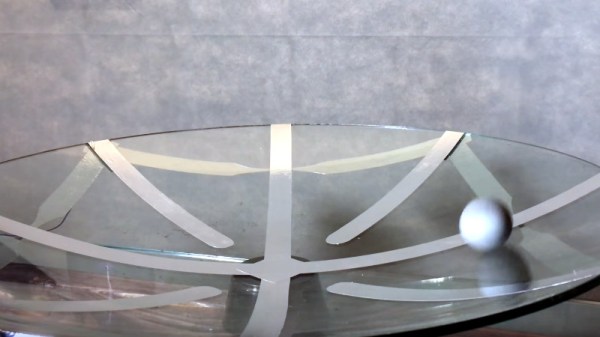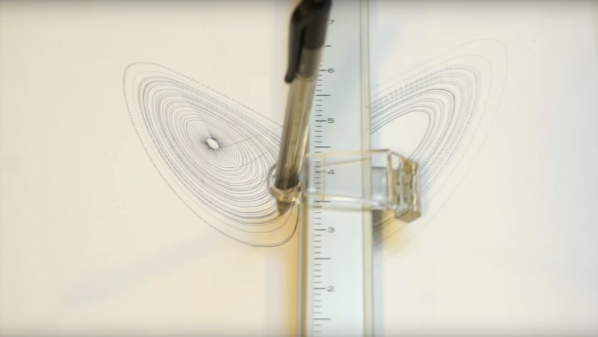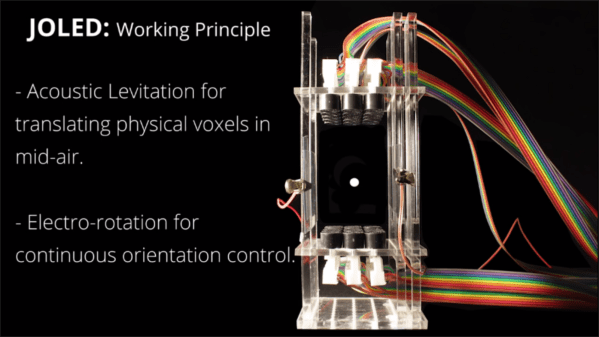There is a special breed of hardware hacker whose playground lies in the high voltage arena. Their bench sizzles with the ozone and plasma of Tesla coils, and perhaps it’s best not to approach it without a handy fluorescent light tube to sniff for unseen hazards. There are many amazing things that can come of these experiments, and fortunately for those of us who lack the means or courage to experiment with them there are many YouTube videos to satisfy our curiosity.
One such comes from [Plasma channel], in the form of a table-top ping-pong ball accelerator. It lacks impressive sparks but makes up for it in scientific edification, because it uses static electricity to send a conductive-paint-coated ping-pong ball spinning round the inside of a curved glass bowl. It does this using alternate positive and negatively charged strips of aluminium tape on the inside of the bowl, each of which charges the ball as it rolls over it, then giving it a bit of repulsive force to keep it spinning. His power comes from a couple of small Wimshurst machines, but no doubt other similar generators could be used instead.
The whole is an entertaining if a little hazardous talking point, and a fun weekend build. The parts are easy enough to find that you might even have them to hand. If continued electrostatic diversion floats your boat, you might like to read our recent excursion into the subject.
Continue reading “Electrostatically Accelerated Ping-Pong Ball Travels The Circuit”


















